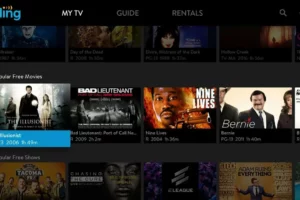Few trends have gained as much momentum as Google Shopping Ads. As we approach 2025, these ads are reshaping how businesses connect with consumers, driving unprecedented levels of engagement and conversion. From their seamless integration with Google’s ecosystem to their unmatched targeting capabilities, Shopping Ads have become a cornerstone of modern digital marketing. But what exactly makes them so powerful? And why are they poised to dominate e-commerce in the years ahead? Let’s explore the reasons behind their meteoric rise and what it means for retailers.
The Rise of Visual Search: A New Era of Discovery
One of the most significant factors propelling Google Shopping Ads is the growing popularity of visual search. Unlike traditional text-based searches, visual search allows users to upload images or take pictures of products, then find exact matches or similar items online. Google Shopping Ads excel in this space, seamlessly integrating with Google Lens and other visual tools to deliver hyper-relevant results.
This shift toward visual discovery aligns perfectly with the way people shop today. Consumers are increasingly drawn to aesthetics, preferring to browse visually appealing catalogs rather than sifting through endless text-based descriptions. Google Shopping Ads capitalize on this trend by showcasing high-quality product images alongside essential details like price, availability, and reviews. This visual-first approach not only captures attention but also builds trust, making it easier for users to transition from discovery to purchase.
Hyper-Personalization: Tailoring Experiences at Scale
Personalization has long been a cornerstone of successful e-commerce, but Google Shopping Ads take it to a new level. Through advanced machine learning algorithms, these ads analyze user behavior, preferences, and purchase history to deliver highly customized experiences. For example, if a user frequently searches for eco-friendly products, Shopping Ads will prioritize environmentally conscious options, ensuring that their shopping journey feels tailored and relevant.
This hyper-personalization extends beyond individual users. Google’s AI-driven insights allow businesses to segment audiences based on demographics, interests, and behaviors, enabling them to craft highly targeted campaigns. Whether you’re promoting seasonal collections, flash sales, or exclusive bundles, Shopping Ads ensure that your message reaches the right audience at the right time. This level of precision not only boosts conversion rates but also enhances customer satisfaction, fostering long-term loyalty.
.png)
Seamless Integration with Google’s Ecosystem
Google Shopping Ads thrive within the broader Google ecosystem, benefiting from seamless integration with other services like Search, Maps, and YouTube. This interconnectedness creates a cohesive shopping experience that spans multiple touchpoints. For instance, a user searching for “running shoes” on Google Search might see Sponsored Product Listings at the top of the results page. Later, while browsing YouTube, they encounter a video ad for the same brand. Finally, when opening Google Maps to check nearby stores, they discover local inventory availability. This cohesive journey eliminates friction, making it easier for users to complete their purchase.
Moreover, Google’s ecosystem supports cross-device tracking, ensuring that users receive consistent messaging across their devices. Whether they’re on desktop, mobile, or tablet, Shopping Ads adapt to the screen size and context, delivering a seamless experience that feels intuitive and natural.
Enhanced Targeting Capabilities: Reaching the Right Audience
Google Shopping Ads offer unparalleled targeting options, allowing businesses to zero in on specific segments of their audience. Through features like remarketing, affinity audiences, and in-market audiences, advertisers can ensure their ads reach users who are most likely to convert. For example, remarketing campaigns target users who previously visited your site but didn’t make a purchase, reminding them of items left in their cart. In-market audiences, on the other hand, identify users actively researching or considering purchasing a specific category of products, ensuring that your ads appear at the peak of their interest.
Google’s AI-driven algorithms also enable dynamic remarketing, where ads automatically adjust based on user behavior. For instance, if a user abandoned a cart, the ad might highlight free shipping or limited-time discounts to incentivize completion. This level of adaptability ensures that every interaction feels relevant and engaging, increasing the likelihood of conversion.
Mobile Optimization: Meeting Users Where They Are
With the majority of online shopping occurring on mobile devices, optimizing for mobile is non-negotiable. Google Shopping Ads excel in this regard, offering responsive designs that adapt seamlessly to different screen sizes. Whether users are browsing on their smartphones or tablets, Shopping Ads ensure that content remains readable, navigable, and visually appealing.
Moreover, Google’s mobile-first indexing prioritizes sites optimized for mobile, giving Shopping Ads an edge in search rankings. This emphasis on mobile responsiveness aligns with consumer behavior, where impulsive purchases often occur on-the-go. By delivering a smooth, intuitive experience, Shopping Ads make it easier for users to complete transactions wherever they are.
Cost Efficiency: Maximizing ROI Without Breaking the Bank
One of the most appealing aspects of Google Shopping Ads is their cost-effectiveness. Unlike traditional advertising methods, Shopping Ads operate on a pay-per-click (PPC) model, meaning businesses only pay when users click on their ads. This pay-as-you-go approach ensures that budgets remain flexible, allowing small and medium-sized enterprises to compete with larger brands.
Google’s auction-based system also levels the playing field by awarding ad placements based on relevance and quality score rather than just bid amounts. Businesses that invest in optimizing their product feeds, landing pages, and ad copy often see higher-quality traffic at lower costs. This efficiency enables advertisers to maximize their return on investment (ROI) while maintaining profitability.
The Future of Google Shopping Ads: Innovations on the Horizon
As we look toward 2025, Google Shopping Ads are poised to continue their dominance through ongoing innovations. One exciting development is the integration of augmented reality (AR) into shopping experiences. AR allows users to virtually “try on” products, visualize furniture in their homes, or test makeup shades—all before making a purchase. This immersive technology enhances engagement and reduces buyer hesitation, making Shopping Ads even more compelling.
Another trend shaping the future of Shopping Ads is the rise of voice commerce. As voice assistants like Google Assistant gain traction, businesses are exploring ways to optimize their product listings for voice search. This shift emphasizes natural language processing (NLP) and conversational AI, ensuring that Shopping Ads remain relevant in a voice-first world.
Google Shopping Ads have become the gold standard for e-commerce marketing, driven by their ability to deliver hyper-relevant, visually engaging, and highly personalized experiences. Their seamless integration with Google’s ecosystem, coupled with advanced targeting capabilities and cost-efficient operations, makes them an indispensable tool for businesses seeking to thrive in the digital age. As we enter 2025, these ads will continue to evolve, incorporating cutting-edge technologies like AR and voice commerce to further enhance the shopping experience.
For retailers, embracing Google Shopping Ads isn’t just about staying competitive—it’s about creating opportunities for growth and innovation. By leveraging the power of visual search, personalization, and mobile optimization, businesses can build stronger connections with their audiences and drive sustained success. As the e-commerce landscape continues to evolve, one thing is certain: Google Shopping Ads will remain at the forefront,引领 the way forward for savvy marketers.















Add Comment